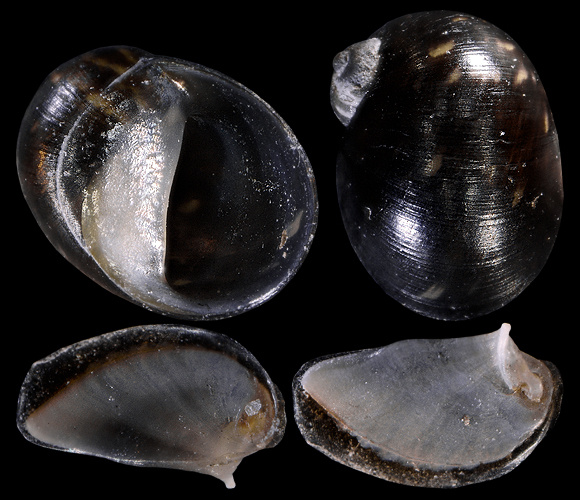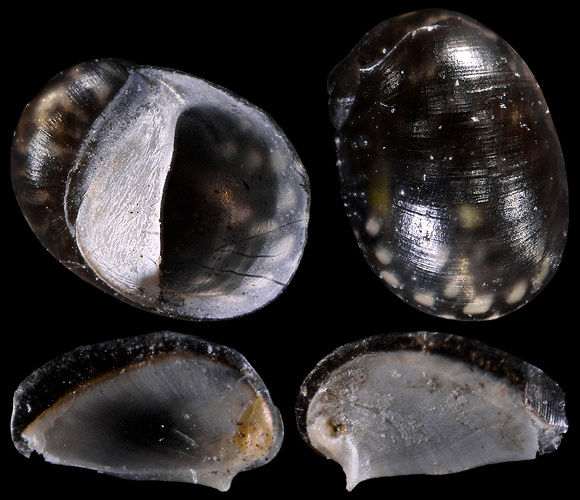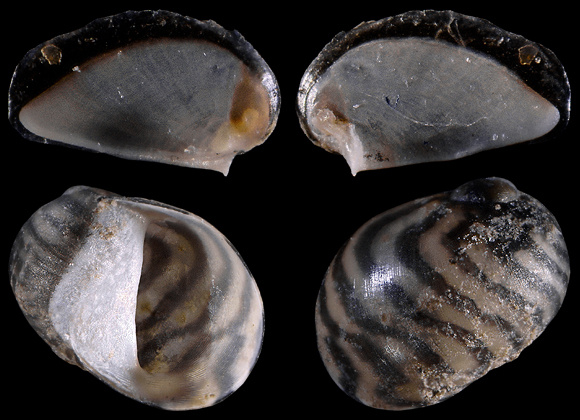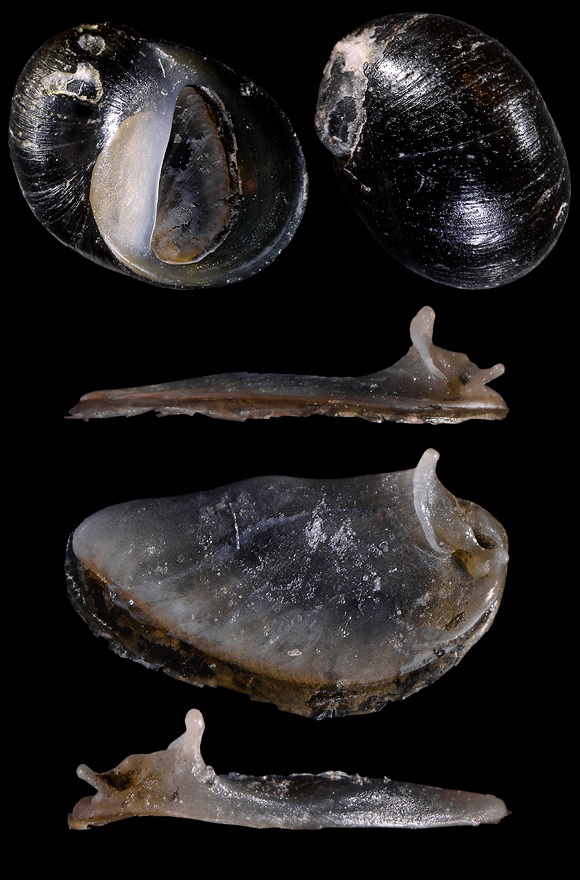
« Shell subovate, thick, violet, slightly striate; spire short, rounded-obtuse; apex minute, laterally placed; labrum suboblique, blue-white, broadened posteriorly, subconvex; adapical margin straight, sharp. […] It often bears transverse striations […] its general colour is a purplish blue, sometimes mingled with a paler hue, and still deprived of […] longitudinal lineaments[…] The operculum of the Anatolian Nerite is bluish black on the posterior side and zoned with a rather broad, whitish band, bordered itself by a saffron thread on the anterior side. » – C. A. Récluz: “Description de quelques espèces de Nérites vivantes” part II (november 1841), Revue zoologique, Paris 1841, p.342-343.
The species is often black, but striped shells exist. Above: specimen collected in the venetian fountain of Pylí, Kos island, Dodecanese. 4,9mm. Notice, on the operculum, the well developed digitation on the anterior end of the pseudoapophysis.
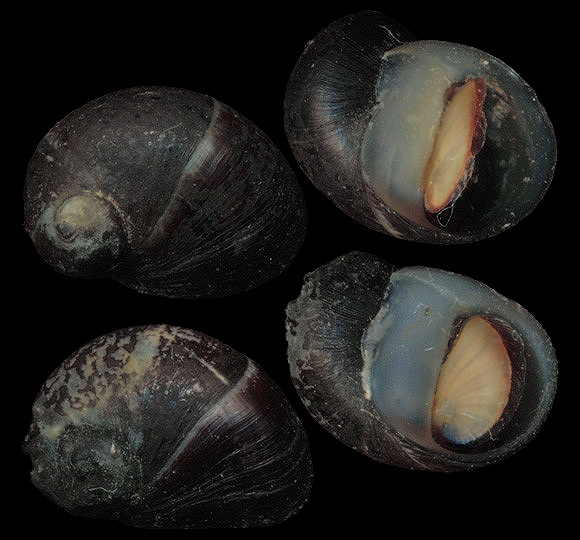
Morphologically, the species differs from altenai by a more reduced columellar plate, and a more uniform dark patterning of the periostracum. The species differs from the variant “saulcyi” of fluviatilis by its shape and operculum. Here, some “saulcyi” from Ezouza river, Geroskipou, Paphos, SW. Cyprus, with the typical fluviatilis operculum. 6,6-6,7mm.
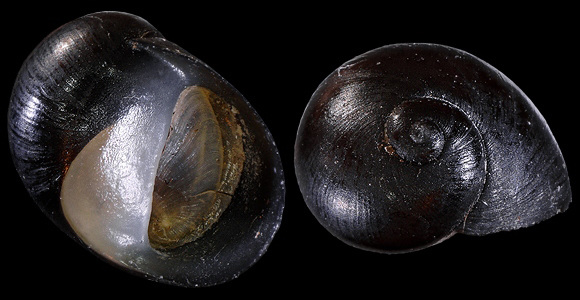
The shell of this species is small, and seems constant in shape: globose like the most globose specimens of baeticus. The columellar callus does not expand posteriorly up to the lip like in the “saulcyi” variant of fluviatilis, but narrows and vanishes at about the four fifths of the columellar height.
In freshwater spring, Datça Peninsula (Reşadiye), Muğla Province, SW. Turkey. 5,3mm.
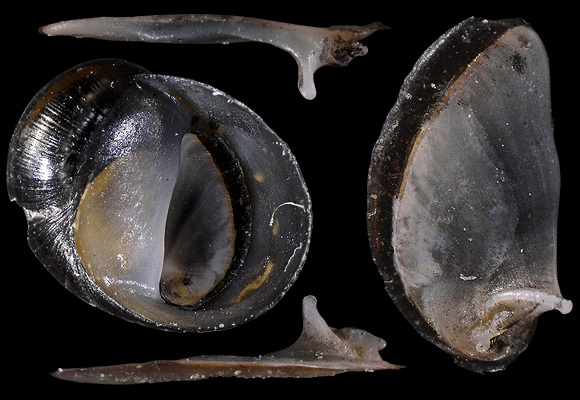
Operculum elongate, solid, of an ivory colour with a large ash-grey stain near the columella, a very thin brownish-reddish band (“saffron” in Récluz) between the solid plate and the labral conchyolin apron, which is very dark and less translucent than in other species such as danubialis or fluviatilis. The apophysis is anchored posteriorly by a quickly sloping and elevated backing, and by a thick and tall anterior abutment (pseudoapophysis), the profile of which is very variable but seems to show in its extremity a digitation more marked in this species than in the other members of the genus, peloponensis excepted. The root of this abutment is small, and often less curved than in baeticus or danubialis.
Above: Pylí again. 4,6mm.
